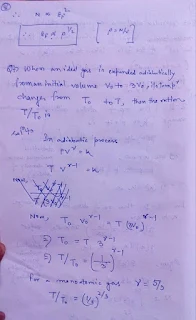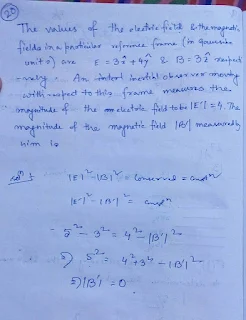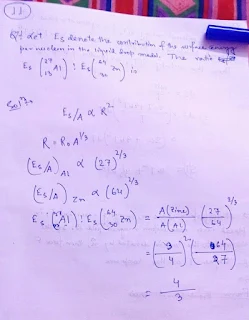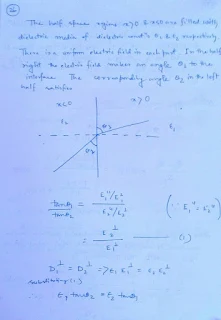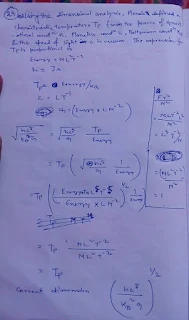Wednesday, 30 November 2016
Tuesday, 29 November 2016
What is Supermoon?
A supermoon is a new or full moon closely coinciding with
perigee – the moon’s closest point to Earth in its monthly orbit. An
astrologer, Richard Nolle, coined the term supermoon over 30 years ago, but now
many in astronomy use it as well. Are supermoons hype? In our opinion … gosh,
no, just modern folklore. They’ve entered the popular culture (check out Sophie
Hunger’s music video in this post, for example). And they can cause real
physical effects, such as larger-than-usual tides. According to the definition
of supermoon coined by Nolle, the year 2016 has a total of six supermoons. The
new moons of March, April and May and the full moons of October, November and
December all qualify as supermoons. Follow the links below to learn more about
super moons and about the supermoons of 2016.
What is a supermoon? We confess: before a few years ago, we
in astronomy had never heard that term. To the best of our knowledge,
astrologer Richard Nolle coined the term supermoon over 30 years ago. The term
has only recently come into popular usage. Nolle has defined a supermoon as:
… a new or full moon
which occurs with the moon at or near (within 90% of) its closest approach to
Earth in a given orbit.
That’s a pretty generous definition, which is why there are
so many supermoons. By this definition, according to Nolle:
There are 4-6
supermoons a year on average.
What did astronomers call these moons before we called them
supermoons? We called them a perigee full moon, or a perigee new moon. Perigee
just means “near Earth.”
The moon is full, or opposite Earth from the sun, once each
month. It’s new, or more or less between the Earth and sun, once each month.
And, every month, as the moon orbits Earth, it comes closest to Earth. That
point is called perigee. The moon always swings farthest away once each month;
that point is called apogee.
About three
or four times a year, the new or full moon coincides closely in time with the
perigee of the moon—the point when the moon is closest to the Earth. These
occurrences are often called ‘perigean spring tides.’ The difference between
‘perigean spring tide’ and normal tidal ranges for all areas of the coast is
small. In most cases, the difference is only a couple of inches above normal
spring tides. Image and caption via NOAA.
When are the supermoons of 2016? By
Nolle’s definition, the new moon or full moon has to come within 361,524
kilometers (224,641 miles) of our planet, as measured from the centers of the
moon and Earth, in order to be considered a supermoon.
By that definition, the year 2016 has a
total of six supermoons. The first supermoon, for 2016, comes with the March 9
new moon. The new moons on April 7 and May 6 are also considered supermoons,
according to Nolle’s definition, and that same definition dictates that the
full moons of October, November and December will be supermoons, too. Thus, the
full moon supermoons – aka near-perigee full moons – in 2016:
Full
moon of October 16 at 4:23 UTC
Full
moon of November 14 at 13:52 UTC
Full
moon of December 14 at 00:05 UTC
The full moon on November 14, 2016,
will present the closest supermoon of the year (356,509 kilometers or 221,524
miles). What’s more, this November 14, 2016 full moon will showcase the moon at
its closest point to Earth thus far in the 21st century (2001 to 2100), and the
moon won’t come this close again until the full moon of November 25, 2034.
In 2016, the
moon comes closest to Earth on November 14 (356,509 kilometers), and swings
farthest away some two weeks before, on October 31 (406,662 kilometers). That’s
a difference of 50,153 kilometers (406,662 – 356,509 = 50,153). Ninety percent
of this 50,153-figure equals 45,137.7 kilometers (0.9 x 50,153 = 45,137.7).
Presumably, any new or full moon coming closer than 361,524.3 kilometers
(406,662 – 45,137.7 = 361,524.3) would be “at or near (within 90% of) its
closest approach to Earth.”
Spring tides
will accompany the supermoons. Will the tides be larger than usual at the
March, April and May 2016 new moons and the October, November and December 2016
full moons? Yes, all full moons (and new moons) combine with the sun to create
larger-than-usual tides, but closer-than-average full moons (or
closer-than-average new moons) elevate the tides even more.
Each month, on
the day of the new moon, the Earth, moon and sun are aligned, with the moon in
between. This line-up creates wide-ranging tides, known as spring tides. High
spring tides climb up especially high, and on the same day low tides plunge
especially low.
The closest new
moon of the year on April 7 and the year’s closest full moon on November 14 are
bound to accentuate the spring tide all the more, giving rise to what’s called
a perigean spring tide. If you live along an ocean coastline, watch for high
tides caused by the November 14 perigean full moon.
Will these high
tides cause flooding? Probably not, unless a strong weather system accompanies
the perigean spring tide. Still, keep an eye on the weather, because storms do
have a large potential to accentuate perigean spring tides.
Dates of
closest full supermoons in past and future years. More often than not, the one
day of the year that the full moon and perigee align also brings about the
year’s closest perigee (also called proxigee). Because the moon has recurring
cycles, we can count on the full moon and perigee to come in concert in periods
of about one year, one month and 18 days.
A lunar month
refers to the time period between successive full moons, a mean period of
29.53059 days. An anomalistic month refers to successive returns to perigee, a
period of 27.55455 days. Hence:
14 x 29.53059
days = 413.428 days
15 x 27.55455
days = 413.318 days
Therefore, the
full moon and perigee realign in periods of about 413 days (one year and 48
days). So we can figure the dates of the closest full moons in recent and
future years as:
March 19, 2011
May 6, 2012
June 23, 2013
August 10, 2014
September 28, 2015
November 14, 2016
January 2, 2018.
There won’t be a perigee full moon in 2017 because the full
moon and perigee won’t realign again (after November 14, 2016) until January 2,
2018.
Looking further
into the future, the perigee full moon will come closer than 356,500 kilometers
for the first time in the 21st century (2001-2100) on November 25, 2034
(356,446 km). The closest full moon of the 21st century will fall on December
6, 2052 (356,425 km).
What is a Black Moon? We had never
heard the term Black Moon until early 2014. It doesn’t come from astronomy, or
skylore, either. Instead, according to David Harper, the term comes from Wiccan
culture. It’s the name for the second of two new moons in one calendar month.
January 2014, for example, had two new moon supermoons, the second of which was
not only a supermoon, but a Black Moon. Does a Black Moon have to be a
supermoon in order to be called Black? No. You can read more about Black Moons
here.
The next Black
moon by the above definition will occur on October 30, 2016. Sten Odenwald at astronomycafe.net lists some other names for the second new moon in a month:
Spinner Moon, Finder’s Moon, Secret Moon.
However, we’ve
also come across another definition for Black Moon: the third of four new moons
in one season. This last happened with the new moon supermoon of February 18,
2015, because this particular new moon was the third of four new moons to take
place between the December 2014 solstice and the March 2015 equinox. The next
Black Moon by this definition will occur on August 21, 2017, to feature a Black
Moon total solar eclipse in the United States.
Bottom line:
The term supermoon doesn’t come from astronomy. It comes from astrology, and
the definition is pretty generous so that there are about 6 supermoons each
year. This post explains what a supermoon is, how many will occur in 2016,
which moon is the most “super” of all the 2016 supermoons, and gives a list of
upcoming full supermoons for the years ahead.
Sunday, 6 November 2016
NOBEL PRIZE-2016
This year’s Nobel Prize in physics goes to three men, who, in
their work in the 1970s and 1980s, explained the very weird thing that happens
to matter when you squish it down to a flat plane, or cool it down to near
absolute zero.
Half the prize goes to David Thouless of the University of
Washington, and the other half is split between Duncan Haldane of Princeton
University and J. Michael Kosterlitz of Brown. All the laureates were born in
the UK.
The prize is a reward for their theoretical work, said Thors
Hans Hansson, a Nobel committee member, at the Nobel announcement. “It has
combined beautiful mathematics and profound physics insights, and achieved unexpected
results that has been confirmed by experiments,” Hansson said.
So what, exactly, did Thouless, Haldane, and Kosterlitz prove?
In essence, they showed that the bizarre properties of matter at
cold or condensed states — for instance, when super-cold materials conduct
electricity without resistance — could be explained by the mathematics of
topology.
Topology is a branch of math that studies what properties are
preserved when objects are stretched, twisted, or deformed. Hansson, apparently
anticipating our total ignorance of topology, helpfully brought along a
cinnamon bun, a bagel, and a pretzel to explain it at the prize announcement.
You can describe the number of holes in each shape
topologically, he said. A bun has zero holes, a bagel has one, and a pretzel
has two. There are no half holes. And the number of holes in these objects
stays the same if you stretch or twist them.
Here he is explaining:
Using topology, Thouless, Haldane, and Kosterlitz were able to
elucidate mysteries like how super-cold films of helium change their phase of matter,
and how those phase transitions then change their properties (like how
conductive they are to electricity and magnetism).
Beyond theory, the research has also led scientists to develop
new materials with novel properties, said Nils Mårtensson, acting chair on the
Nobel committee on physics. Some of these materials are called “topological insulators,” which conduct electricity solely on
their surface.
These
topological insulators haven’t made it into any commercial products yet, but
the Nobel committee and the scientists are still excited about the
possibilities for using them in quantum computing and other yet-to-be
discovered applications. One of these insulators,called stanene —
basically a one-atom thick layer of tin —
will conduct electricity at high temperatures with little resistance. One day,
scientists hope stanene could perhaps replacecopper
components in computers.
That
this work on topological insulators won the prize is a bit of a surprise. The
detection of gravitational waves at LIGO was one of the most stunning physics
announcements of the year, confirming a prediction made by Einstein more than
100 years ago. Many predicted the scientists who led that work would win.
Why
wasn’t LIGO selected? One answer: The discovery, announced in February, missed
Nobel’s deadline for consideration in January. The Nobel Committee also typically
awards scientific discoveries many years after they are first shared — after
they’ve truly changed the field.
Source: www.vox.com, www.nobelprize.org
Tuesday, 28 June 2016
Subscribe to:
Comments (Atom)










